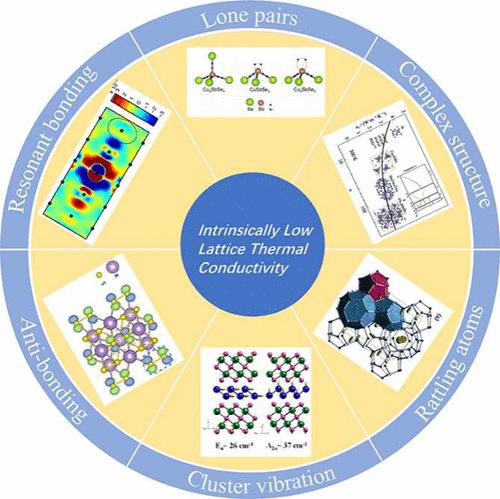当前位置:
X-MOL 学术
›
J. Phys. Chem. Lett.
›
论文详情
Our official English website, www.x-mol.net, welcomes your
feedback! (Note: you will need to create a separate account there.)
Origin of Intrinsically Low Lattice Thermal Conductivity in Solids
The Journal of Physical Chemistry Letters ( IF 4.8 ) Pub Date : 2024-11-11 , DOI: 10.1021/acs.jpclett.4c02770 Yu Wu, Anqi Huang, Linxuan Ji, Jialin Ji, Yimin Ding, Liujiang Zhou
The Journal of Physical Chemistry Letters ( IF 4.8 ) Pub Date : 2024-11-11 , DOI: 10.1021/acs.jpclett.4c02770 Yu Wu, Anqi Huang, Linxuan Ji, Jialin Ji, Yimin Ding, Liujiang Zhou

|
Reducing lattice thermal conductivity through external modulation techniques such as defect engineering may potentially interfere with electronic transport. Materials with intrinsically low lattice thermal conductivity have the potential to decouple the control of lattice heat transport and electronic transport, which is of great significance in the field of thermoelectric energy conversion. This paper reviews the origin of intrinsically low lattice thermal conductivity, which is directly related to three physical quantities (heat capacity, phonon group velocity, and phonon relaxation time) and is ultimately reflected in the lattice structure and bonding characteristics. An understanding of the fundamental nature of low lattice thermal conductivity can aid in guiding experimental design and theoretically enabling high-throughput prediction of novel low lattice thermal conductivity materials according to the intrinsic properties.
中文翻译:

固体中本征低晶格热导率的起源
通过缺陷工程等外部调制技术降低晶格热导率可能会干扰电子传输。具有本征低晶格热导率的材料具有使晶格热传输和电子传输控制解耦的潜力,这在热电能量转换领域具有重要意义。本文综述了本征低晶格热导率的由来,它与三个物理量(热容、声子群速度和声子弛豫时间)直接相关,并最终体现在晶格结构和键合特性上。了解低晶格热导率的基本性质有助于指导实验设计,并在理论上根据本征特性对新型低晶格热导率材料进行高通量预测。
更新日期:2024-11-12
中文翻译:

固体中本征低晶格热导率的起源
通过缺陷工程等外部调制技术降低晶格热导率可能会干扰电子传输。具有本征低晶格热导率的材料具有使晶格热传输和电子传输控制解耦的潜力,这在热电能量转换领域具有重要意义。本文综述了本征低晶格热导率的由来,它与三个物理量(热容、声子群速度和声子弛豫时间)直接相关,并最终体现在晶格结构和键合特性上。了解低晶格热导率的基本性质有助于指导实验设计,并在理论上根据本征特性对新型低晶格热导率材料进行高通量预测。


















































 京公网安备 11010802027423号
京公网安备 11010802027423号